In a world where data breaches are as common as cat videos, ensuring your cloud security is no laughing matter. Enter ISO 27001, the superhero of information security management. This internationally recognized standard helps organizations keep their data safe and sound, like a digital fortress protecting your most precious secrets—like that embarrassing karaoke video from last year’s office party.
Transitioning to the cloud can feel like jumping into the deep end without a life jacket. But with ISO 27001, businesses can navigate the waters of cloud security with confidence. It sets the stage for a robust framework, making sure that data remains secure, accessible, and compliant. So, if you want to swim with the big fish in the cloud without worrying about sharks, ISO 27001 is your go-to lifeguard.
Table of Contents
ToggleOverview of ISO 27001
ISO 27001 serves as a pivotal standard for managing information security in organizations, particularly in cloud environments. Its robust framework enables businesses to address security challenges and protect sensitive data effectively.
Importance of Information Security
Information security protects organizations from cyber threats and data breaches. Data breaches can lead to severe financial and reputational harm. ISO 27001 helps businesses establish a systematic approach to manage and mitigate risks. Compliance with this standard enhances trust among customers and partners. Implementing ISO 27001 reduces vulnerabilities by ensuring appropriate controls are in place. Organizations that prioritize information security demonstrate their commitment to safeguarding sensitive information. Cloud adoption becomes less daunting when security measures align with recognized standards.
Key Components of ISO 27001
ISO 27001 consists of various key components structured around risk management. These elements include the risk assessment process, which identifies and evaluates information security risks. Organizations are required to establish an information security policy that outlines their commitment to security. Furthermore, asset management ensures that critical data and resources receive proper protection. Continuous monitoring and improvement of security measures are essential to maintain compliance. Employees must undergo security awareness training to understand their role in information security. Lastly, regular audits verify adherence to ISO 27001 standards, reinforcing the effectiveness of implemented controls.
Understanding ISO 27001 Cloud
ISO 27001 Cloud establishes a framework for managing information security risks in cloud environments. Organizations leverage this standard to protect sensitive data against cyber threats.
Definition and Scope
ISO 27001 encompasses a systematic approach to managing sensitive information. It includes defining security policies, conducting risk assessments, and ensuring continuous monitoring. The scope extends to every aspect of an organization’s data handling practices. Organizations can implement this standard across various cloud services, ensuring alignment with regulatory requirements. It addresses the unique challenges posed by cloud computing, such as data storage and accessibility, promoting overall data integrity.
Benefits of Implementing ISO 27001 in Cloud Environments
Implementing ISO 27001 enhances security and compliance within cloud environments. First, it provides a structured framework for identifying and mitigating risks. Enhanced trust from customers and partners occurs through adherence to recognized standards. Organizations improve incident response capabilities, leading to reduced data breach impacts. Regular audits ensure ongoing compliance, allowing for timely updates to security measures. Streamlined processes reduce operational inefficiencies, fostering a culture of continuous improvement in data management.
Challenges of ISO 27001 Cloud Implementation
Implementing ISO 27001 in cloud environments presents several challenges. Understanding these obstacles is crucial for effective deployment.
Common Obstacles
Organizations face various obstacles during ISO 27001 cloud implementation. Compliance costs may become burdensome, especially for smaller companies. Complexity often arises due to diverse cloud architectures, leading to confusion about security measures. In many cases, resource allocation becomes an issue, impacting personnel and budget. Some organizations encounter resistance to change from employees who are accustomed to existing systems. Furthermore, ensuring continuous compliance with evolving regulations poses significant challenges.
Solutions to Overcome Challenges
Addressing these challenges requires strategic solutions. For budget constraints, allocating funds for training and resources improves understanding and compliance. Simplifying processes through automation can mitigate complexity in cloud architecture. Engaging employees early in the implementation fosters a culture of security awareness. Regular training sessions equip staff with the necessary skills to adapt. Maintaining collaboration with cloud service providers ensures alignment with compliance requirements, facilitating continuous improvement.
Best Practices for ISO 27001 Cloud Adoption
ISO 27001 provides essential guidance for securely adopting cloud technologies. Following best practices during implementation enhances data protection and compliance.
Steps for Successful Implementation
Engaging stakeholders early fosters a collaborative approach. Establishing a clear security policy sets the foundation for compliance. Conducting thorough risk assessments identifies vulnerabilities specific to the cloud environment. Developing an information security framework helps address these identified risks. Collaborating with cloud service providers ensures alignment with ISO 27001 requirements. Training employees on security protocols enhances awareness and reduces the likelihood of breaches. Regular audits help maintain compliance and establish accountability.
Continuous Improvement and Monitoring
Establishing a framework for ongoing monitoring strengthens security posture. Regularly assessing risks allows organizations to adapt to evolving threats. Implementing feedback loops ensures continuous improvement in security measures. Updating security policies in response to audit findings will promote a proactive approach. Encouraging employee contributions to security practices fosters a culture of accountability. Tracking compliance metrics helps organizations measure their success and identify areas for enhancement. Adopting automated monitoring tools can streamline processes and improve response times.
Conclusion
Implementing ISO 27001 in cloud environments is essential for organizations aiming to enhance their information security posture. This standard not only offers a robust framework for managing risks but also fosters trust among customers and partners. By addressing the unique challenges of cloud computing, ISO 27001 ensures that businesses can navigate the complexities of data protection with confidence.
Embracing best practices and engaging stakeholders throughout the process further strengthens the security measures in place. As organizations continue to evolve in the digital landscape, aligning with ISO 27001 will play a pivotal role in safeguarding sensitive data and maintaining compliance. Ultimately, this proactive approach to cloud security can lead to significant long-term benefits, positioning businesses for success in an increasingly interconnected world.



